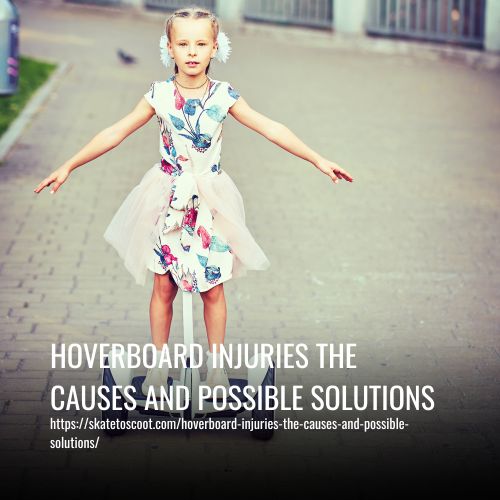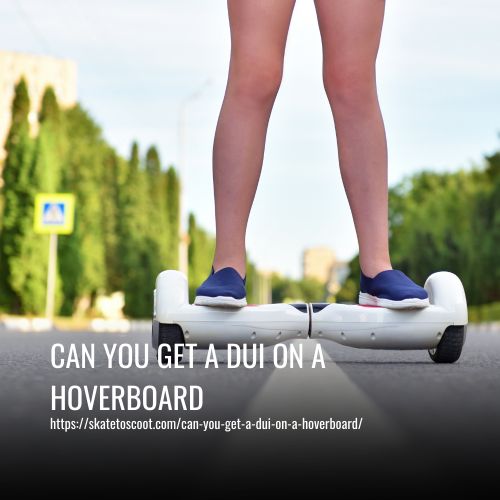As an Amazon Associate we earn from qualifying purchases.
Hoverboard injuries are caused by a variety of factors, including improper usage and design defects. Improper usage typically involves not following guidelines on personal safety such as wearing proper protective gear (e.g. helmets and pads) when riding or inexperienced users attempting stunts and tricks before they are ready. Other causes can include loose parts that get snagged or come undone while it is in use, mechanical issues with the hoverboard itself such as brakes that don’t work, etc., and even environmental issues such as slippery surfaces or uneven terrain.
Possible solutions for hoverboard injuries include creating and distributing safety information to riders, providing proper training for new users, and requiring safety equipment when riding. Additionally, manufacturing companies should invest in quality control measures to ensure all their products are functional and safe before being put on the market. Finally, riders should be aware of their local laws regarding hoverboards as some areas may have banned them from public roads or trails entirely due to increased injury risks associated with them.

Hover Board Injury Statistics
In the United States, hoverboard injuries have become a cause for concern. According to the United States Consumer Product Safety Commission (USCPSC), there were 70 reports of emergency room visits related to hoverboard injuries in 2015. While the fire hazard associated with hoverboards received immediate media attention, the USCPSC also highlighted the fall hazard that comes with using the device.
To prevent injuries, users are advised to follow safe charging practices, wear helmets, and use wrist guards. In Miami alone, ten individuals were hospitalized during the Christmas break due to hoverboard-related injuries. Statistics from the American Academy of Pediatrics reveal that approximately 26,854 children visited emergency departments for hoverboard injuries between 2015 and 2016.
The most common injuries were fractures, bruises, and strains/sprains. While these statistics may be alarming, it is important to note that other wheeled toys, such as skateboards, also result in numerous emergency room visits.
Common Causes of Hover Board Injuries
These injuries can range from minor cuts and bruises to more serious bone fractures and head injuries. The causes of hoverboard injuries are varied, but some common factors include inexperience, lack of protective gear, and defects in the hoverboard itself. Inexperienced riders often have difficulty maneuvering the hoverboard and maintaining their balance, leading to falls and injuries.
1. Fire-Related Injuries
Fire-related injuries are a significant concern when it comes to hoverboards. There have been numerous reports of lithium-ion batteries catching fire, prompting some stores to stop selling these products. The federal government initiated an investigation into 22 incidents of these fires, which have occurred in at least 22 states.
It is believed that these fires are sparked by the batteries while charging, leading to potential skin burns and the risk of smoke inhalation. Safety precautions, such as using protective gear and ensuring proper charging practices, are essential to reduce the risk of fire-related injuries associated with hoverboards.
2. Head Injuries
Head injuries are a common occurrence in hoverboard accidents, often resulting from falls or collisions. When users lose their balance and fall off the device, they may land on their heads, leading to serious head injuries. Additionally, collisions can occur when multiple people are using hoverboards or other mobile devices simultaneously, resulting in bumps to the head.
These head injuries can be severe and may require medical attention. It is crucial for hoverboard users to take precautions, such as wearing protective gear and practicing proper balance and control, to reduce the risk of head injuries.
3. Fractures
Accidents such as falls and collisions can occur while riding hoverboards, increasing the risk of fractures in various parts of the body. Fractures, which refer to the breakage or cracking of bones, can range from minor hairline fractures to more severe breaks that may require extensive medical intervention. These injuries often result in discomfort, restricted mobility, and potential long-term complications.
It is crucial for hoverboard riders to prioritize safety measures, such as wearing protective gear and abiding by safety standards, to reduce the risk of fractures and other injuries. Additionally, proper training and adherence to age and weight limits can help prevent inexperienced riders, including children, from engaging in high-risk activities that may result in fractures and other significant harm.
Distal radius fracture
Distal radius fracture, specifically seen in hoverboard-related injuries, is a common fracture resulting from using an outstretched hand to break a fall. To prevent such injuries, it is strongly recommended to use wrist guards while riding a hoverboard. Studies have shown that in simulated forward falls, wrist guards can reduce the impact force through the hand at the wrist by almost 50 percent.
By wearing protective gear like wrist guards, hoverboard riders can significantly decrease the risk of suffering a distal radius fracture and promote overall safety while using these electronic devices.
Open and closed phalangeal fractures
These fractures occur when the fingers get caught between the wheel and wheel-well of the hoverboard. Some patients reported believing the device was turned off or getting their own fingers stuck while attempting tricks. These behaviors can lead to both open and closed fractures of the fingers.
To prevent such injuries, it is vital to educate hoverboard users about the risks of placing their fingers near the wheel well. By spreading awareness about this specific danger, we can help reduce the frequency of open and closed phalangeal fractures associated with hoverboard use.
4. Other Injuries
In addition to the commonly reported hoverboard injuries such as traumatic brain injuries and bone fractures, there are other types of injuries that can occur while using a hoverboard. Children, in particular, may place their fingers or other body parts in the wheel or other components of the hoverboard, resulting in injuries such as cuts or bruises.
Additionally, there have been cases where children have been run over by a hoverboard, leading to bruises or lacerations. Other injuries reported by hospitals include sprains, strains, contusions, lacerations, neck injuries, and back injuries. It is important to be aware of these potential risks and take necessary precautions to prevent hoverboard-related injuries.
Risk Factors Hoverboard Injuries
Many younger adults and teenagers are attracted to these devices, increasing the likelihood of accidents. In addition, some individuals deliberately fall or record their stumbles with the intention of gaining online popularity, thereby exposing themselves to potential harm.
It is important to note that even individuals who consider themselves athletically inclined can still experience injuries while using hoverboards. The mobile nature of these devices makes them comparable to Go Karts and Segways in terms of risk.
When thrown from a hoverboard, individuals can sustain serious injuries. Therefore, it is crucial to be aware of these risk factors and take necessary precautions to prevent hoverboard-related injuries.
Legal Assistance:
Individuals who have been injured as a result of using a hoverboard may need the assistance of a personal injury lawyer who specializes in product liability cases. These lawyers have the knowledge and experience to explain the legal obligations of manufacturers and designers, and how liability can be established when someone suffers an injury. A product liability lawyer can help victims seek compensation by conducting investigations, gathering evidence, and preparing the case to establish the defendant’s liability.
Safety with Hoverboards and Other Wheeled Toys
Children should be prohibited from riding in or near traffic, and if applicable, enrollment in lessons can teach them how to fall properly and minimize the risk of serious injuries. It is important to carefully read the manufacturer’s directions, including any age or weight restrictions, and avoid using motorized toys that overheat.
Always use the charging cord provided with the product and ensure that the wheeled device is free of debris and in good condition. In the event of a fall resulting in loss of consciousness, change in behavior, seizures, severe headache, vomiting, or swelling over the head, immediate medical attention should be sought.
Wrist and ankle sprains can typically be treated with rest, ice, compression, elevation, and over-the-counter analgesics. However, if there is severe pain or swelling that does not improve, a doctor’s appointment should be made.
Injuries Associated With Hoverboard Devices
Hoverboards have gained popularity in recent years, but they have also brought about an alarming number of injuries. One of the most common causes of injuries associated with hoverboard devices is falls. Due to their lack of stability, riders can easily lose their balance and fall off, resulting in scrapes, bruises, broken bones, and other injuries.
Additionally, hoverboards have been known to catch fire, posing a significant risk to users. Overheating batteries has led to numerous incidents of hoverboards catching fire, causing property damage and even injuries.
As a result, many cities are imposing restrictions on hoverboard use to prevent these accidents. It is crucial for riders to prioritize safety by using protective gear, such as helmets and knee pads, and being cautious in their movements to reduce the risk of injuries associated with hoverboard devices.
What If You Are Injured?
If you have been injured from a hoverboard, you may be entitled to compensation for those injuries. While manufacturers may claim that the issue is consumers’ use of inadequate charging devices, studies have already shown that the device used to charge the hoverboard is not easily replicated and that most reported fires occurred when the proper charger was used.
Although many manufacturers involved in this issue are overseas subsidiaries, if the device was sold in the United States and caused serious injuries, especially traumatic brain injuries, victims should have the right to seek compensation.
Speak With A Tampa Personal Injury Attorney
Hoverboard injuries can occur due to various factors, including falls, collisions, and defects in the product itself. Common injuries associated with hoverboards include bone fractures, wrist fractures, head injuries, and finger injuries. Many of these injuries require medical attention and can result in substantial medical bills.
Additionally, there have been concerns about the safety of hoverboards due to the risk of fires caused by lithium-ion batteries. To minimize the risk of hoverboard injuries, it is important to use safety gear such as helmets, kneepads, and wrist guards. It is also essential to follow safety standards and guidelines, and for manufacturers to ensure their products meet safety requirements.
FAQ
Hoverboards are powered by lithium-ion batteries, which can present a fire hazard if not handled properly. It is important to use hoverboards that comply with safety standards and have undergone thorough testing to ensure safe operation.
To reduce the risk of injuries, it is crucial to wear appropriate safety gear such as helmets, knee pads, and wrist guards. Learning and practicing proper riding techniques, maintaining a low center of gravity, and avoiding risky maneuvers can also help minimize the risk.
Hoverboard injuries can occur due to a variety of factors, including loss of balance and falls, collisions with objects or vehicles, lack of experience or skill in riding, mechanical defects, and even improper use of the device.
While it may not be possible to prevent all hoverboard injuries, taking proper precautions, using protective gear, and riding responsibly can significantly reduce the risk of accidents and injuries.
If you sustain an injury while riding a hoverboard, you should seek immediate medical attention. It is also advisable to consult with a personal injury attorney who specializes in product liability claims, especially if the injury resulted from a defective product.
Conclusion:
While hoverboards may be a fun and trendy mode of transportation, it’s important to be aware of the potential risks and take necessary precautions. By wearing protective gear, practicing in safe areas, and being mindful of your surroundings, you can greatly reduce the chances of hoverboard injuries.
Remember, safety should always be a top priority, so ride responsibly and enjoy the hoverboard experience to the fullest!
Amazon and the Amazon logo are trademarks of Amazon.com, Inc, or its affiliates.



